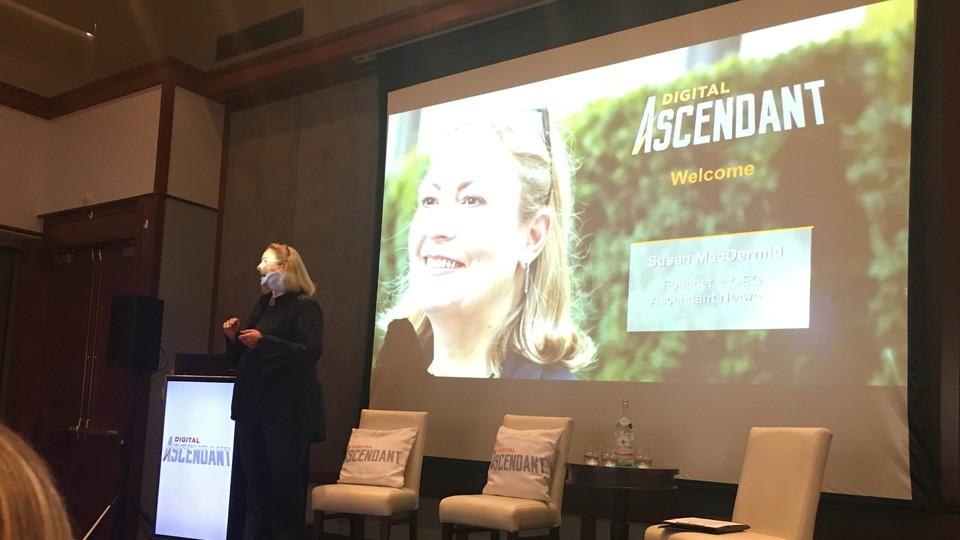
Written by Melanie Huet – Vice President, Marketing at Kraft Heinz
The landscape for a marketer is shifting rapidly and depending on your industry the job can change every six months, every week or even daily.
A couple of months ago in Palo Alto I had the pleasure to attend the Digital Ascendant gathering, a very esteemed group of marketing leaders and digital natives assembled to talk about the future of marketing and marketeers. Several critical pieces of advice and key trends were shared throughout two intense and inspirational days.
1. Goodbye CMO, Hello CMTO Or Is It CRO?
The leaders of the future (the very close in future) look different than the leaders of the past. Marketers need to have a keen eye towards collecting a set of experiences that builds skills in brand marketing, sales and technology. As the C-Suite evolves and responsibilities shift across plates, marketers are increasingly responsible for technology and sales revenue in addition to traditional CMO duties.
In fact, many CMOs are spending more on technology than CIOs and this trend will accelerate. The rapid shift in the role of a CMO is calling for a new breed of leaders that embody the following:
- Transformational leadership of teams and organizations
- Learning agility to quickly understand and adapt new technology that delivers results
- A broader skill set of brand marketing, sales and digital to lead in a more expansive role
- Challenger mindset to break conventions and continually look for better ways to execute
- Evolution of the Champion of the Consumer from delivering against unmet needs to owning the entire relationship and satisfaction of the Consumer journey
- Owner of long term brand equity (especially in publicly held corporations where quarterly earnings drive a focus on short term returns)
2. New And Important Buzzy Acronym – CDP
CDP = Customer Data Platform = a single platform that manages data across multiple sources.
Getting all the data in one place isn’t sufficient. We must work to connect the on-line experience with the off-line experience and fully optimize the consumer journey. An example of CDP done well could look like a woman browsing for a new sweater on-line. Past behavioral data is used to understand her preferences for brand, style and price point. A customized ad is served to her. Predictive analytics understand when she is most likely to buy. More communication appears at this key intersection where purchase is most likely. The woman is persuaded to buy but makes her purchase in a physical store. CDP at it’s full potential could connect this entire journey and would know that the sweater was purchased off-line thus closing the loop. No longer would this woman keep getting served ads for the sweater that she already bought. Does CDP apply to your business and are you prepared for it?
3. If You Think You Own The Face And Voice Of Your Brand… You May Be Mistaken
Susan MacDermid, Founder + CEO of Ascendant Network, Inc., aptly pointed out that we are entering the era of brand disintermediation. New user interfaces will perform customer intermediation. In the future Amazon might be the platform you use to check your bank account, order pizza, plan an event and more. These new interfaces will become the face of your brand as consumers’ interaction gets consolidated into fewer touch points. Will you let the interface owner, Amazon for example, own the face and voice of your brand? As these new user interfaces become the digital embodiment of your brand, the artificial intelligence (AI) that empowers the interface becomes your brand. As the interface’s AI bots learn from each interaction who will mentor your bots? Surely you want to influence, teach and control your AI bots as much as possible and not leave the mentoring of the bots up to the owner of the interface, who could potentially be both a business partner and a competitor. What is your plan to achieve this?
4. Focus On Delivering Outcomes That Matter
The short tenure of a CMO is a well known issue in the industry. The tenure is up to approximately 4 years now from a previously very short 28 months. It is still the most rapid cycle in the C-suite. Several theories exist on why the quick turnover. Here are the theories I believe to be the strongest and most supported:
- CMOs are heavily recruited; A majority of this turnover is voluntary with CMOs leaving for the next big role.
- Lack of alignment with the CEO: There isn’t one set of criteria for success in the CMO role whereas a technical role like a CFO is well defined and quite consistent across companies. The CMO must layout a plan that supports the CEOs vision and goals and have clear metrics that measure progress. Lack of alignment leads to dissatisfaction with the CMO.
Lynne Biggars, CMO of Visa, captures it best when she said, “Never forget your role is to deliver outcomes for your company.” Lynne credits her success to always being focused on outcomes and delivering outcomes that matter. She consistently finds ways to add value outside of her scope.
Are your goals aligned with your boss? Is your focus in the right place? Are you focused on delivering outcomes that matter?
The Digital Ascendant community + gathering is by invitation only and were recognized by Forbes Magazine as a Top 10 Marketing Conference To Check Out In 2018. These carefully curated events are guaranteed to inspire, motivate, energize and stretch you to take your performance and your thinking up another level. http://www.ascendantnetwork.com/
#AscendantSV #CMO #DigitalMarketing #CDP @huetmelanie
Footnote. https://www.forbes.com/sites/gartnergroup/2017/01/09/cmo-role-expands-with-rising-marketing-budgets/#486a71347b14




